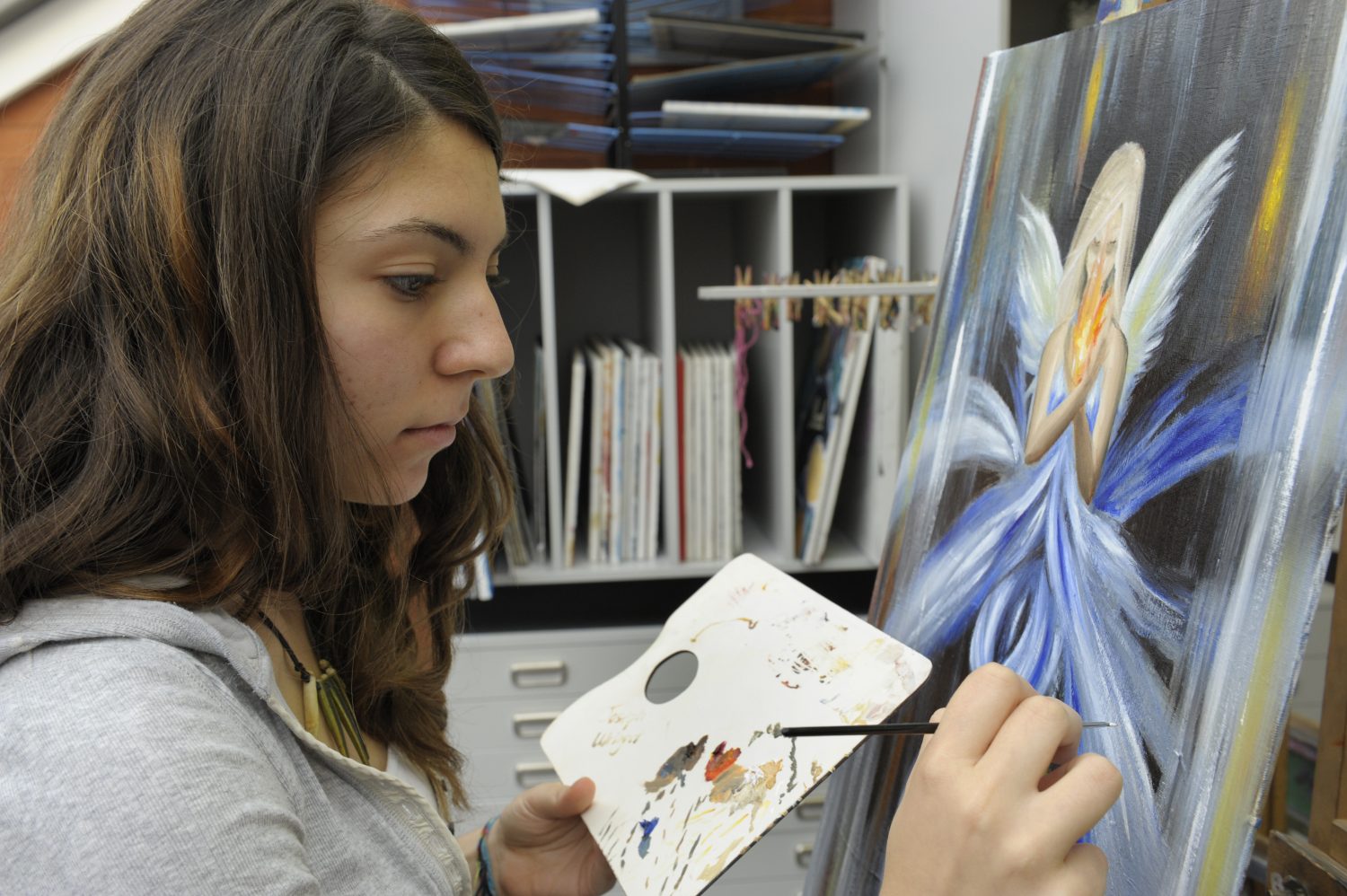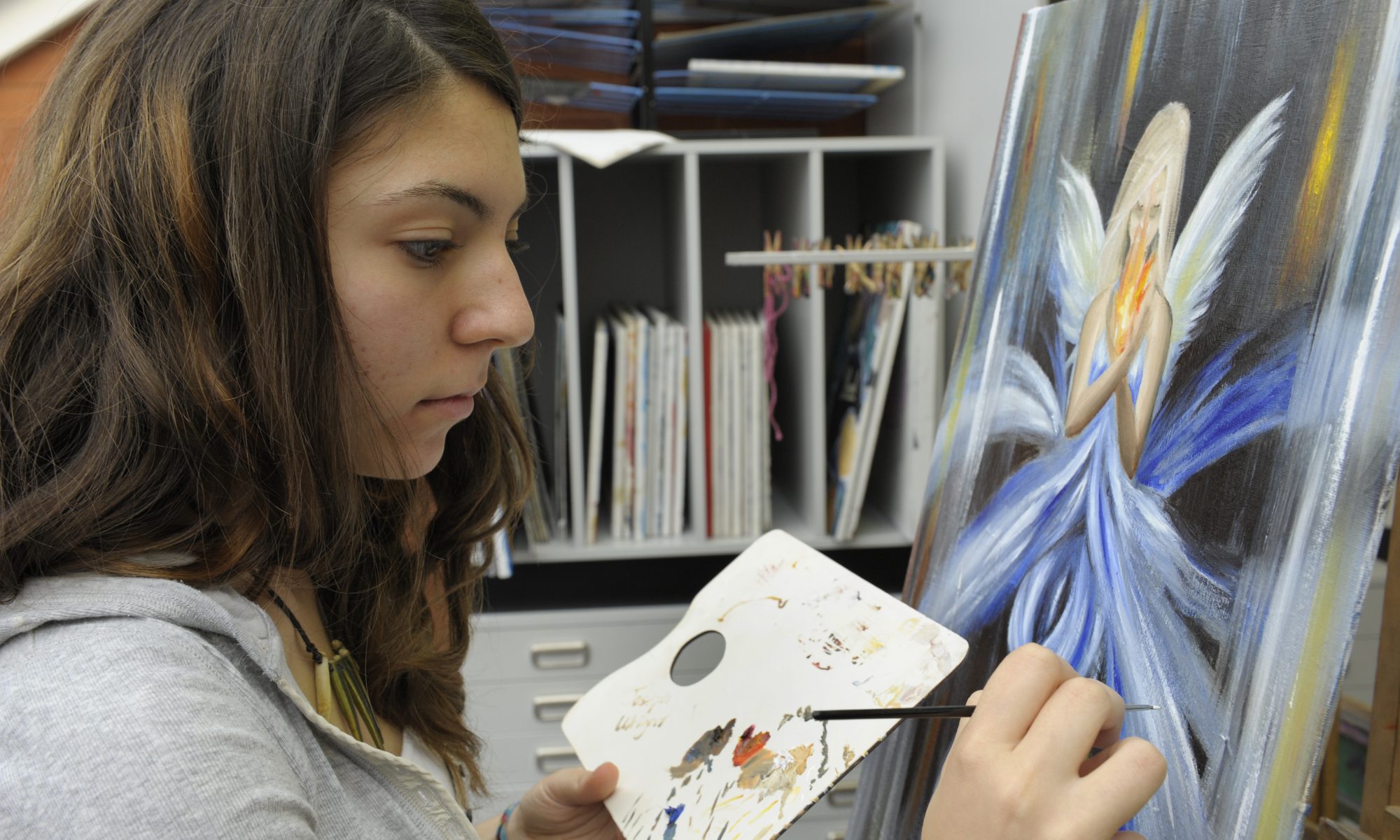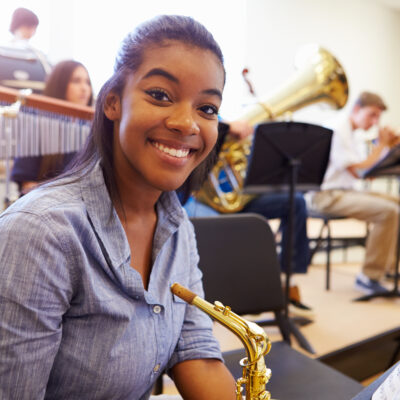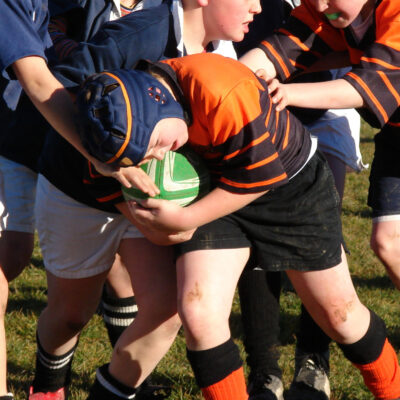Andrew Vaughan, Head of Visual Arts, at ACS Egham International Schools
For several years now official government education policy has focused on the study of STEM subjects – science, technology, engineering, maths. But at ACS International Schools, we believe that the study of art is just as important and should in fact be combined with them. This is why we talk about STEAM in our schools, adding art to the well-known acronym.
Focusing on STEAM provides a better education and preparation for the future for all our youngsters. It can also help address the widely reported gender imbalance in the study of science subjects.
So why is art such an important complement to science? In its Future of Jobs report the World Economic Forum estimates ‘two thirds of children entering primary school today will ultimately end up working in completely new job types that don’t yet exist’.
Traditional teaching methods where STEM subjects are taught in ‘subject silos’ are no longer enough for this fast-changing world. Subjects like science and maths cannot be taught in a stand-alone way if students are to develop the skills they need to thrive. Young people need transferable skills they can apply to think beyond the classroom or text-based learning.
We often invite parents and business leaders in to give talks at school. At one such talk at ACS Egham, the CEO of a global bank said that they are just as likely to recruit someone who has an arts degree as one in maths, because their business is looking for innovators; people who can come up with new options and synthesise ideas.
Equally, a speaker from one of the top four management accountancy firms giving a presentation at ACS Cobham recently, told us that an analysis of staff appraisal scores and qualifications revealed that the best performing employees had degrees in arts subjects rather than maths or science. The company changed its recruitment policy as a consequence.
This is not to suggest that we don’t need maths or science, but to show that art is an essential complement to science subjects. It can be the spark that brings these subjects to life, at school, at university and in later working life.
The study of the arts ensures students develop life skills such as creativity, problem solving and communication abilities which are increasingly in demand across all industries. Art also plays a vital role in equipping students with an innovative mindset, needed to be successful in engineering and business.
A former pupil at ACS Cobham, Candace Rubenstein, a lead material lab analyst at Under Armour – luxury sportswear brand, says: “Without exposure to arts subjects you can become a human calculator essentially, but by adding an artistic lens, you can look at STEM from a unique angle – thus coming up with solutions the human calculator could never dream of.”
Her views are echoed by Gwen Musial who also went to ACS and has just completed a Ph.D in biomedical engineering: “In research and development, creativity is a useful tool for thinking of unique solutions to difficult problems. By having a balanced and well-rounded background, a student has a broad base of experience to draw upon when faced with challenges,” she said.
How do we inspire more of our youngsters, especially girls, to maintain and deepen their interest in STEAM subjects? By giving them options and choices and allowing them to develop their creativity through studying arts subjects, while also maintaining contact with traditional science subjects.
Art is being increasingly side-lined at many schools. According to figures from the Education Policy Institute, the proportion of 15 and 16-year-olds studying arts subjects such as art, music and drama has fallen to the lowest level in a decade as a result of government policies and education cuts.
Many schools streamline their curriculum so that children have to make a binary choice between arts or science when they make A level or other exam choices at age 16/17.
This is desperately sad because art can be such a balm or counterbalance in life, and provides a different way of learning and self-expression which can be especially important in the teenage years.
A study by the University of Sydney found that active participation in the arts increases students’ motivation, engagement in class, self-esteem and improves wellbeing. There is no limit to creativity in art, it is an open-ended doorway to expression. It allows us to explore and express personal feelings and responses to the world. Art can both soothe and energise the mind, qualities we need more than ever before in our globally connected, fast-paced digital world.
But for art to be an effective part of STEAM it has to be more than just a stand-alone subject. At ACS we physically bring art into science, where an art class might work in the science lab, and we invite the art students to express the science being conducted using any medium they like. This shows them how they can express scientific learning and approaches through art, which piques the interest of students studying both subjects.
At ACS Hillingdon students use apps like Hopscotch and Floors as an arts-based way of learning to code. This cross-curriculum approach, combining art, technology and computer science, nurtures logical thinking, problem-solving and persistence, encourages collaboration and communication, and provides the opportunity for students to develop practical, future-focused skills, in an imaginative, fun and creative way.
We find that including art in STEAM makes all the subjects more lively and relevant, and builds exactly the qualities universities want, without narrowing students’ options.
Hannah Wagner, a current ACS Cobham student, who was recently awarded a summer research programme at the University of Surrey to study electrical engineering, commented:
“It’s widely acknowledged that fewer girls are entering the engineering sector – so I’m proud to have been selected for this placement. I think to get more girls into STEM subjects we need first to remove the mentality that we only enjoy and excel at certain subjects.”
Beyond the school years there are a wealth of statistics which demonstrate the economic significance of the creative arts; just think of the film industry, or the gaming industry which between them contribute £92bn a year to the UK economy.
Given this and how much we value our business entrepreneurs and innovators, it is astonishing how compartmentalised the approach to art and science has become in education.
Last year, university admissions officers said the top two reasons why students fail in their first year at university is not being able to think and learn independently and being unable to manage their own time. Exam cramming and narrowing of subject choice has removed the spark and creativity from learning. Russell Group universities have inadvertently played their part in reducing the support for arts subjects by specifically highlighting the value they place on ‘hard subjects’.
The STEAM approach, combining all the core subjects, will help address this issue and develop a generation who can express new innovative ideas and become our future entrepreneurs and innovators.
“The world no longer rewards people for what they know – Google knows everything – but for what they can do with what they know. Global education today needs to be much more about ways of thinking, involving creativity, critical thinking, problem solving and decision-making; about ways of working, including communication and collaboration.”
Andreas Schleicher, Director for Education and Skills at OECD
TEST
Art enhances STEM subjects
TEST
Science at Egham HS
You may also like
Perfect Pitch
Mike Piercy, education consultant and former Head of The New Beacon, sings the praises of music in education What exactly is it that drives parents to make huge sacrifices by sending their children to independent schools? Different families have different...
‘It’s not fair!’
Mike Piercy, education consultant and former Head of The New Beacon, explains the importance of winning and losing with good grace The beefy second row lay prone, groaning, as the pack lumbered away. “Get up, Darling!” I cried. Opposition spectators...
Performance Power
Eastbourne College and Bede’s School discuss opportunities which give their students time to shine Director of Music at Eastbourne College, Dan Jordan, sings the praises of music at the school. It is 6.30pm, the night before a well-needed half-term holiday....















